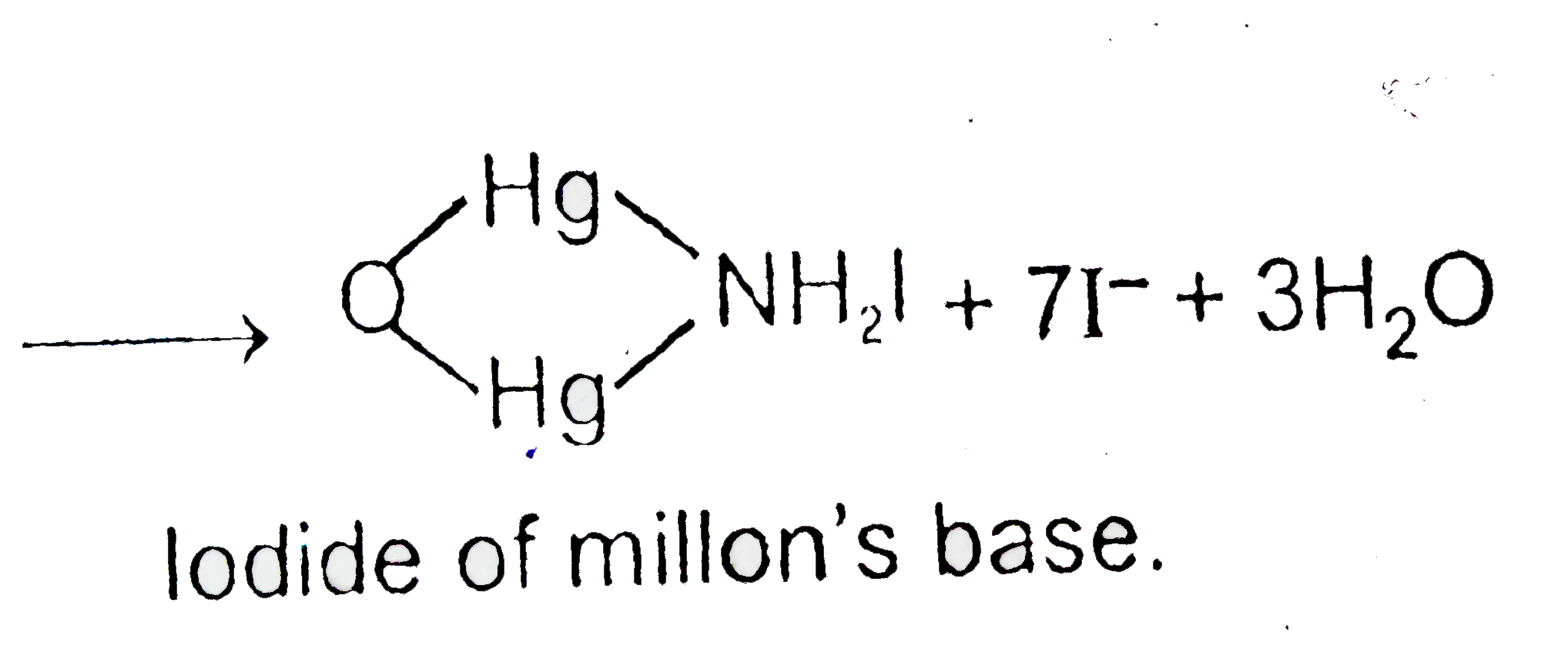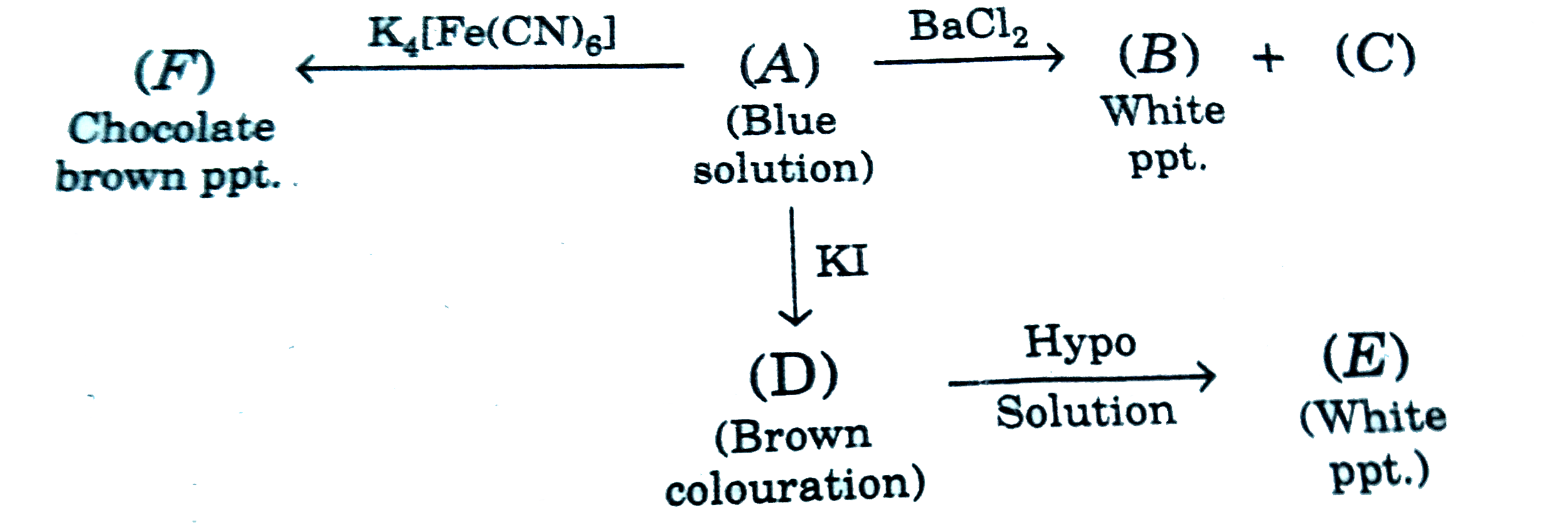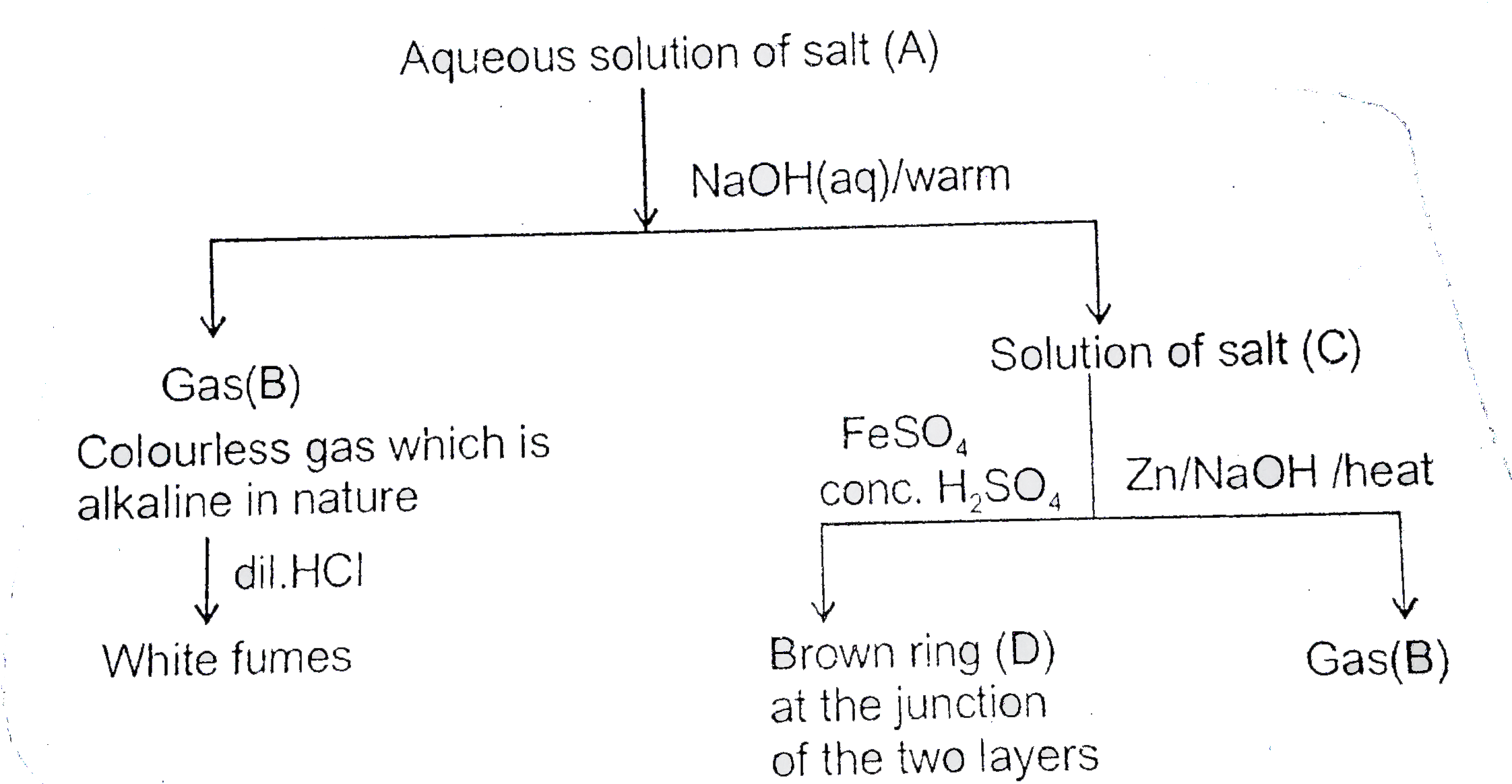Basic radical which gives Nessler's reagent test in which brown precipitate or brown colouration obtained
Video Solution
Text Solution
NH+4 ammonium ion.
NH+4+2[Hgl4]2−+4OH−→

|
Topper's Solved these Questions
- QUALITATIVE ANALYSIS PART 1Book:RESONANCEChapter:QUALITATIVE ANALYSIS PART 1Exercise:EXERCISE 1 PART 1 QUALITATIVE ANALYSIS
Explore 13 Videos
- QUALITATIVE ANALYSIS PART 1Book:RESONANCEChapter:QUALITATIVE ANALYSIS PART 1Exercise:EXERCISE 1 PART 2 QUALITATIVE ANALYSIS
Explore 22 Videos
- QUALITATIVE ANALYSIS PART 1Book:RESONANCEChapter:QUALITATIVE ANALYSIS PART 1Exercise:A.L.P
Explore 39 Videos
- QUALITATIVE ANALYSIS (ANION)Book:RESONANCEChapter:QUALITATIVE ANALYSIS (ANION)Exercise:Matching List Type
Explore 1 Video
- RANK BOOSTERBook:RESONANCEChapter:RANK BOOSTERExercise:All Questions
Explore 620 Videos
Similar Questions
Knowledge Check

Brown colouration 'D' contains:ACu2[Fe(CN)6]BCu2I2CKI3DCuSO4With Nesslers reagent, ammonia gives brown precipitate due to formation of
AAmmonium hydroxideBIodide of Millon's baseCPotassium amideDChloramineWith Nessler's reagent ammonia gives
Awhite precipitateBviolet precipitateCblue precipitateDbrown precipitate
This provides brown colour to algae
View SolutionWhich no mixing gives deep brown colour :
View SolutionChocolate brown precipitate is formed with:
View SolutionThis provides brown colour to algae
View Solution
Salt(A) on heating gives a colourless neutral gas which supports combustion.
From the aforesaid, flow diagram, answer the following questions.
The basic radical of salt (A) and gas B both gives brown precipitate with Nessler's reagent.The composition of the brown precipitate is:
View Solution

